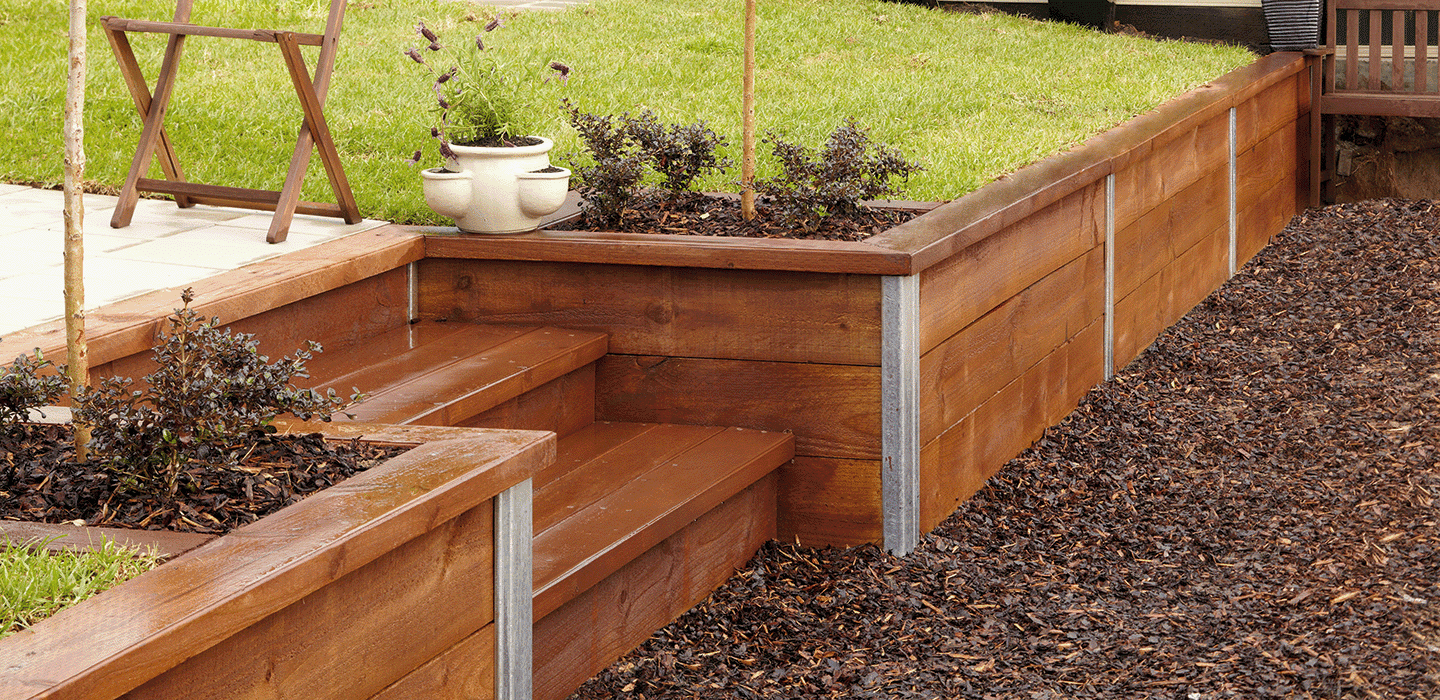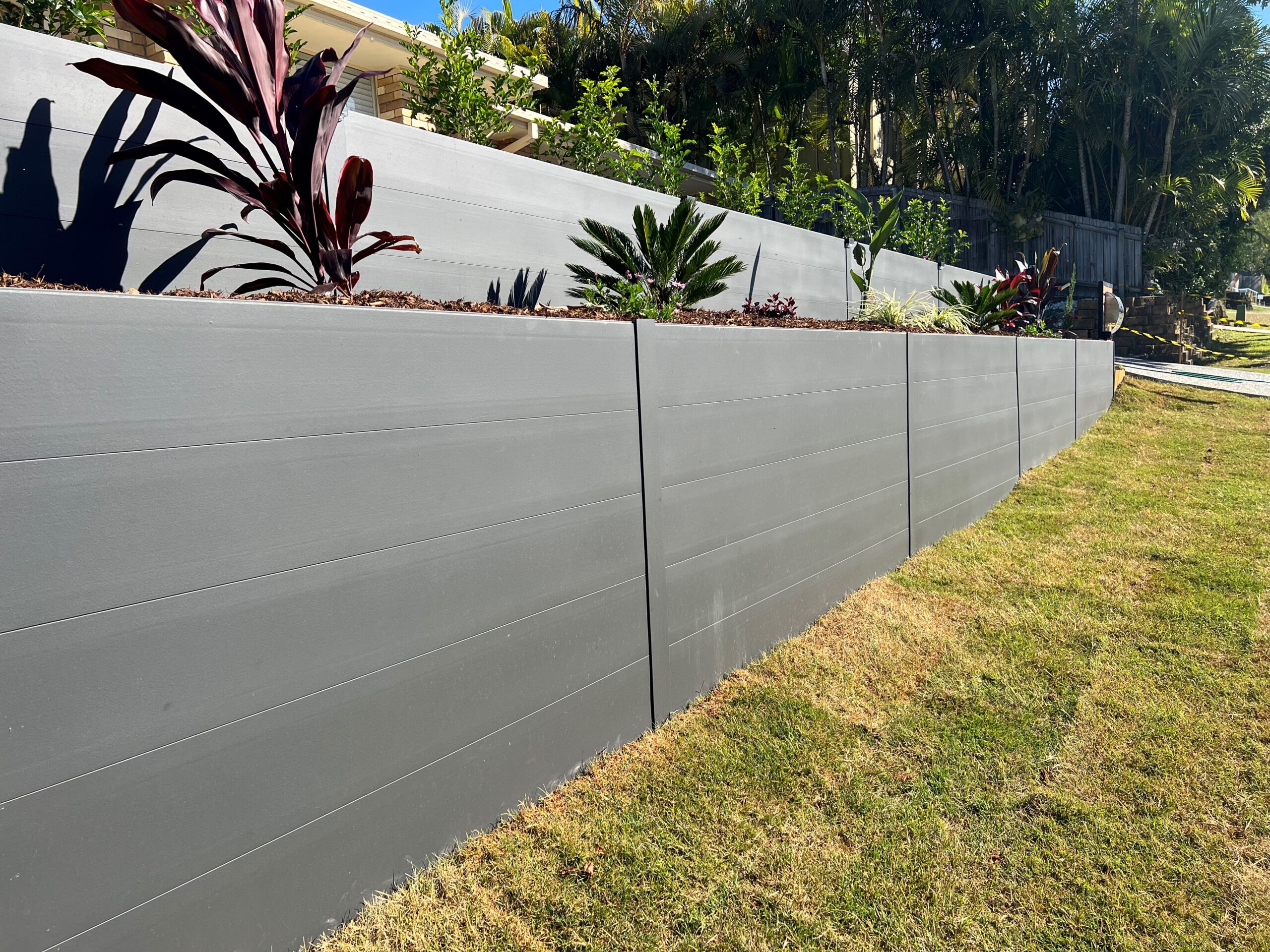Just How Retaining Walls Sunshine Coast Include Worth and Performance to Your Residential property
Just How Retaining Walls Sunshine Coast Include Worth and Performance to Your Residential property
Blog Article
Enhancing Residential Property Stability: The Function of Retaining Walls in Dirt Retention and Erosion Control
Maintaining walls stand as silent guardians, playing an essential role in dirt retention and erosion control. By exploring the subtleties of various types, design factors to consider, building and construction methods, and maintenance tips linked with maintaining walls, a much deeper understanding of their essential role in boosting home security arises.
Value of Retaining Walls in Stability
Preserving walls play a vital duty in holding back soil, avoiding erosion, and producing level surface areas in sloped locations. By giving structural support, maintaining wall surfaces help to redistribute lateral pressure caused by soil, stopping landslides and slippage.
Maintaining wall surfaces are specifically essential in sloping or unequal surfaces where dirt disintegration is a typical incident. Without ample assistance, dirt disintegration can lead to the degradation of landscapes, endangering the honesty of frameworks and posturing threats to citizens. Preserving wall surfaces function as obstacles, supporting the dirt and stopping it from changing downhill throughout heavy rainfall or other ecological stress factors.
Moreover, maintaining walls offer long-lasting advantages by minimizing maintenance costs associated with dirt erosion and land instability. By buying well-designed preserving wall surfaces, property proprietors can guarantee the longevity and sustainability of their landscapes while advertising a aesthetically attractive and safe setting.

Sorts Of Retaining Walls for Disintegration Control
Commonly made use of in landscaping and civil engineering tasks, different types of maintaining walls act as efficient services for disintegration control in varied terrain problems. Gravity maintaining walls are tough structures that count on their weight to withstand the pressure of the dirt behind them. They appropriate for reduced to medium elevation applications and are generally made of concrete or rock. Cantilever retaining wall surfaces, on the other hand, are created with a thicker base and use a bar arm to endure the dirt pressure. These wall surfaces are typically utilized in areas where room is limited.
For taller wall surfaces or where room is a restriction, secured retaining walls are usually employed. These wall surfaces use cords or strips that are secured into the soil or rock behind the wall surface to give extra assistance. An additional type, the sheet pile maintaining wall, is suitable for areas with soft soil. Retaining Walls Sunshine Coast. These wall surfaces include interlacing sheets that are driven into the ground to create an obstacle versus dirt erosion. When selecting the ideal kind of preserving wall for erosion control, elements such as dirt make-up, wall surface elevation, and website problems have to be thoroughly thought about to make sure durable security and performance.
Layout Factors To Consider for Soil Retention
Incorporating the concepts of structural design and environmental sustainability is crucial when considering style aspects for effective dirt retention remedies. When creating for soil retention, it is vital to analyze the certain requirements of the website, consisting of soil make-up, water drainage patterns, and slope security. The height and area of the preserving wall surface are crucial factors that affect the overall layout. Engineers must likewise consider the stress exerted by the preserved soil and potential side loads to make sure the structure's stability over time.
Furthermore, the product choice for the preserving wall is vital in enhancing durability and capability. Concrete, timber, gabion baskets, and natural rock are usual materials utilized in preserving wall building and construction, each with its unique advantages and factors to consider. Correct drainage systems, such as weep openings and French drains pipes, should be integrated into the style to avoid water accumulation behind the wall surface, which can my review here lead to architectural failure and disintegration.
Building And Construction Strategies for Preserving Walls
When implementing design factors to consider for reliable soil retention, the construction strategies for preserving walls play a vital function in guaranteeing structural honesty and lasting security. The success of a retaining wall largely depends on the construction methods employed. One common method is the gravity wall surface, which depends on the weight and mass of the wall itself to resist the stress of the retained soil. Gravity wall surfaces appropriate for reduced to tool heights and are fairly very easy to construct. Retaining Walls Sunshine Coast.
Another widely utilized building technique is the cantilevered wall surface, which uses a concrete piece structure that extends in reverse into the retained dirt. This style provides added security and appropriates for tool to high keeping wall surfaces. For taller frameworks, reinforced dirt techniques such as the usage of geogrids or soil nails can be used to improve the wall surface's stamina and security.

Upkeep Tips for Building Stability
To make sure long-lasting residential property stability, regular upkeep practices are necessary for maintaining the honesty of protecting against and maintaining walls disintegration concerns. Cleaning up the surface of the retaining wall surfaces can likewise assist maintain their architectural stability by eliminating dirt, particles, and plants that could compromise the wall surface over time.
In addition to visual inspections and cleansing, it is crucial to inspect the drainage systems linked with the keeping walls. Making certain that drains are free from blockages and working correctly can protect against water build-up behind the wall surfaces, which can lead to pressure and possible failure. Appropriately operating drainage systems are essential for managing water flow and lowering the risk of disintegration.
On a regular basis keeping an eye on and keeping retaining walls according to these tips can prolong their life-span and add to the general stability of the residential or commercial helpful site property.
Final Thought
Finally, maintaining walls play a vital function in boosting home stability by preventing soil disintegration and retaining soil in position. By making use of different sorts of maintaining wall surfaces and considering layout and construction strategies, residential or commercial property proprietors can properly regulate erosion and maintain the integrity of their land. Routine maintenance of maintaining wall surfaces is crucial to ensure long-term stability and protection against erosion. Appropriately created and kept preserving wall surfaces are crucial elements in preserving residential or commercial property stability.
For taller walls or where room is a restriction, anchored retaining wall surfaces are commonly utilized. These walls make use of wires or strips that are anchored into the dirt or rock behind the wall surface to offer additional assistance. When choosing the appropriate type of keeping wall for erosion control, variables such as soil composition, wall surface height, and website conditions need to be thoroughly considered to make certain resilient stability and performance.
One typical strategy is the gravity wall, click here now which counts on the weight and mass of the wall itself to resist the pressure of the retained dirt. Cleaning up the surface of the maintaining walls can likewise help preserve their structural stability by removing dirt, particles, and greenery that can compromise the wall surface over time.
Report this page